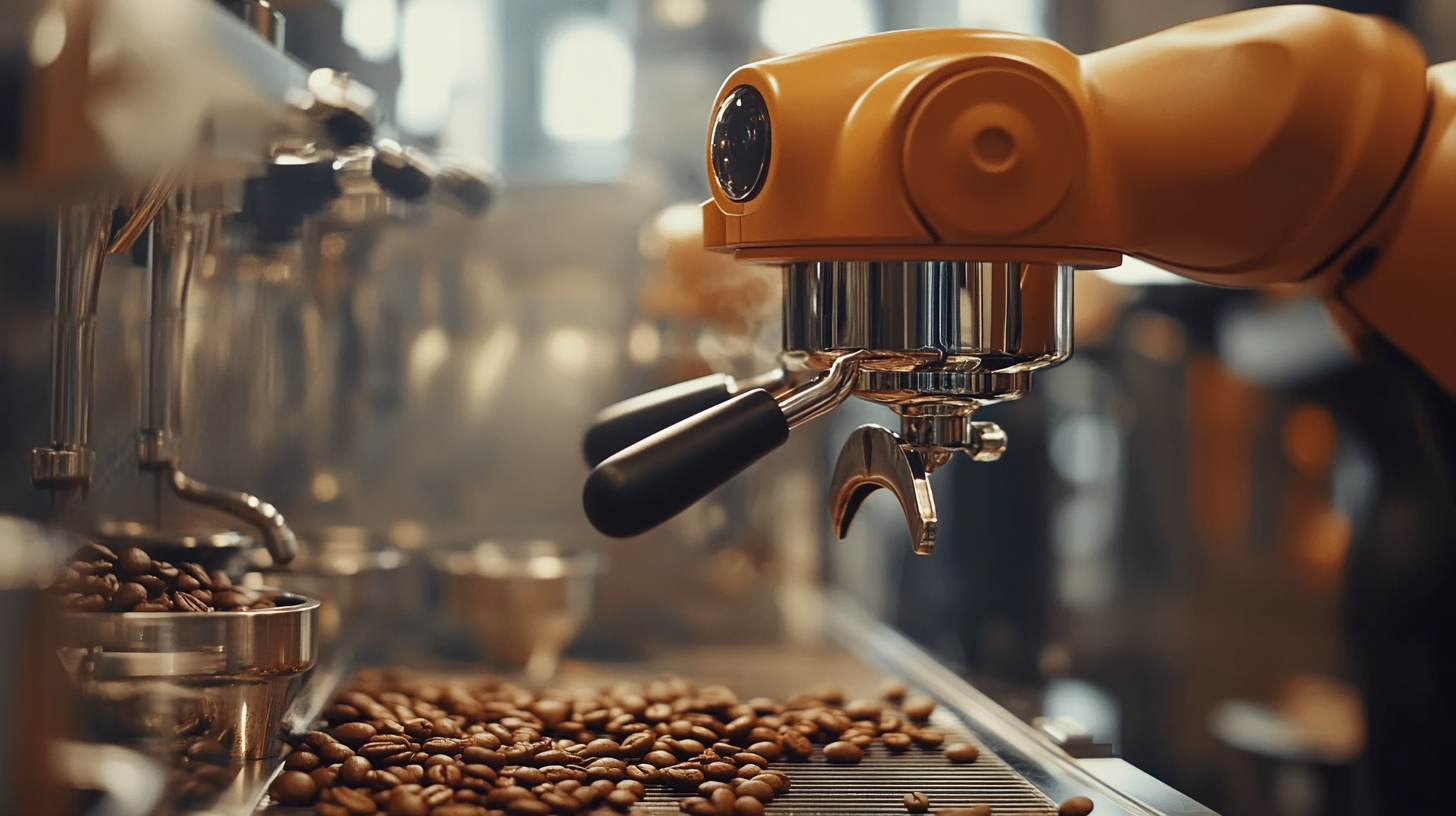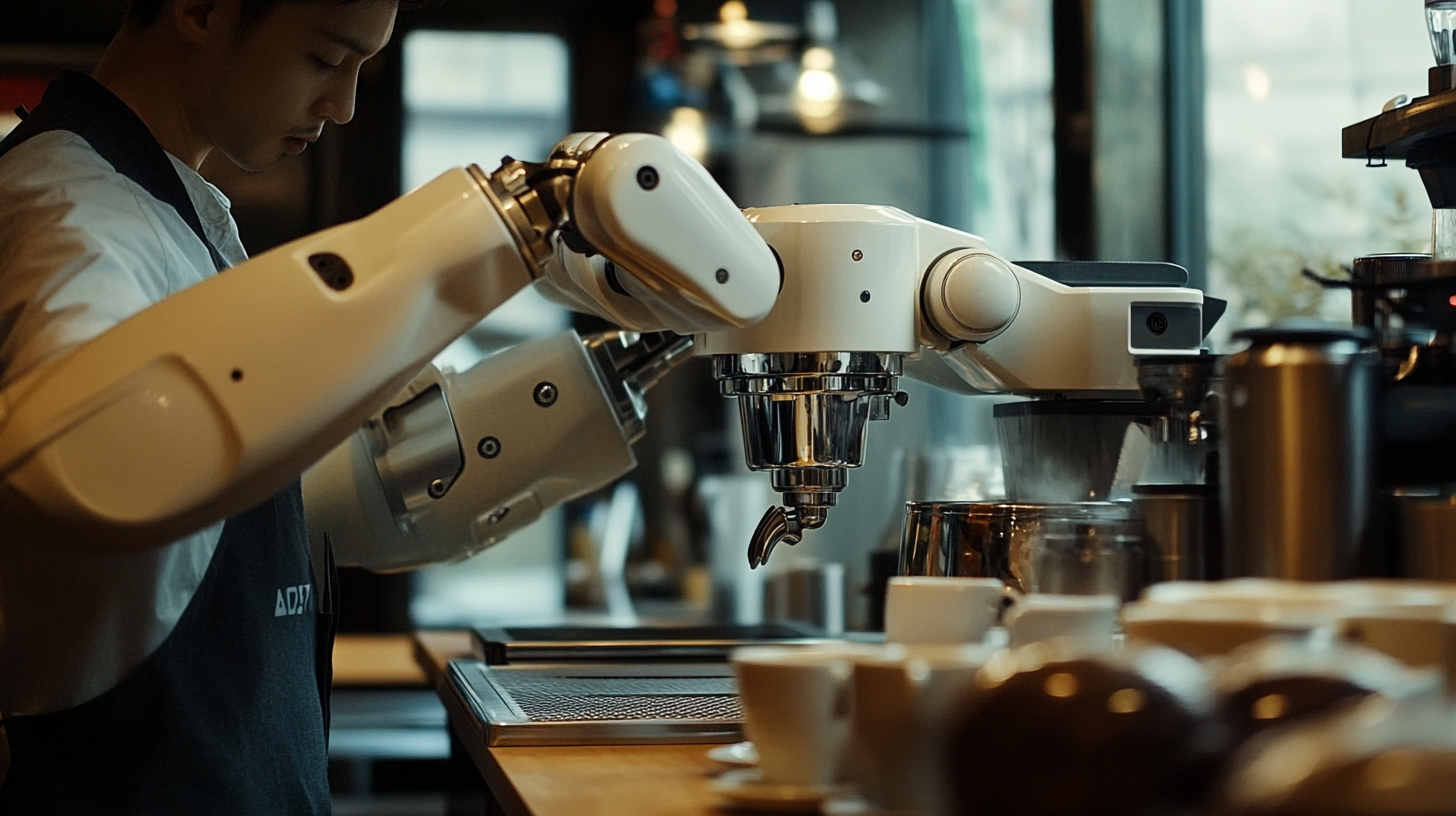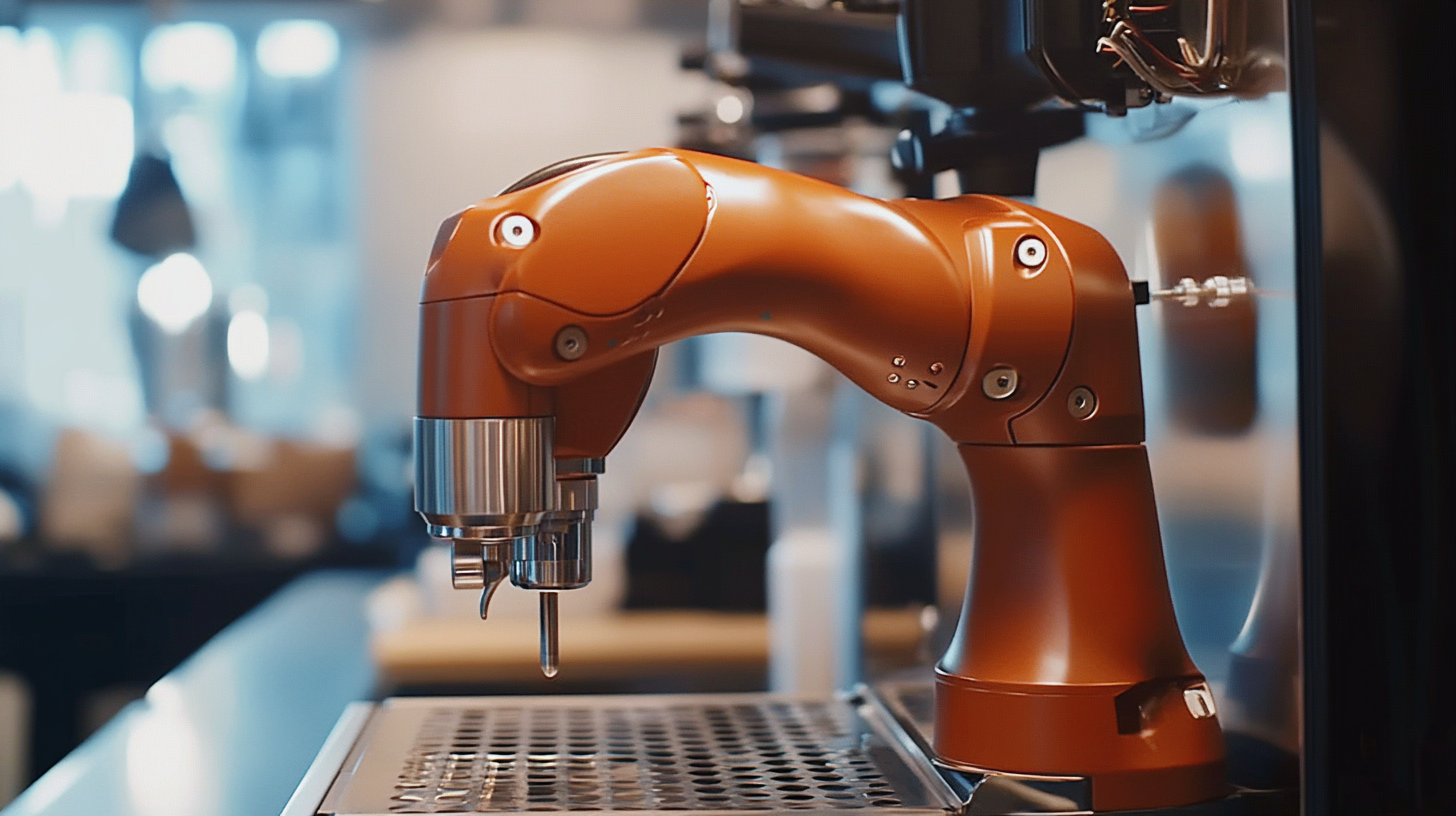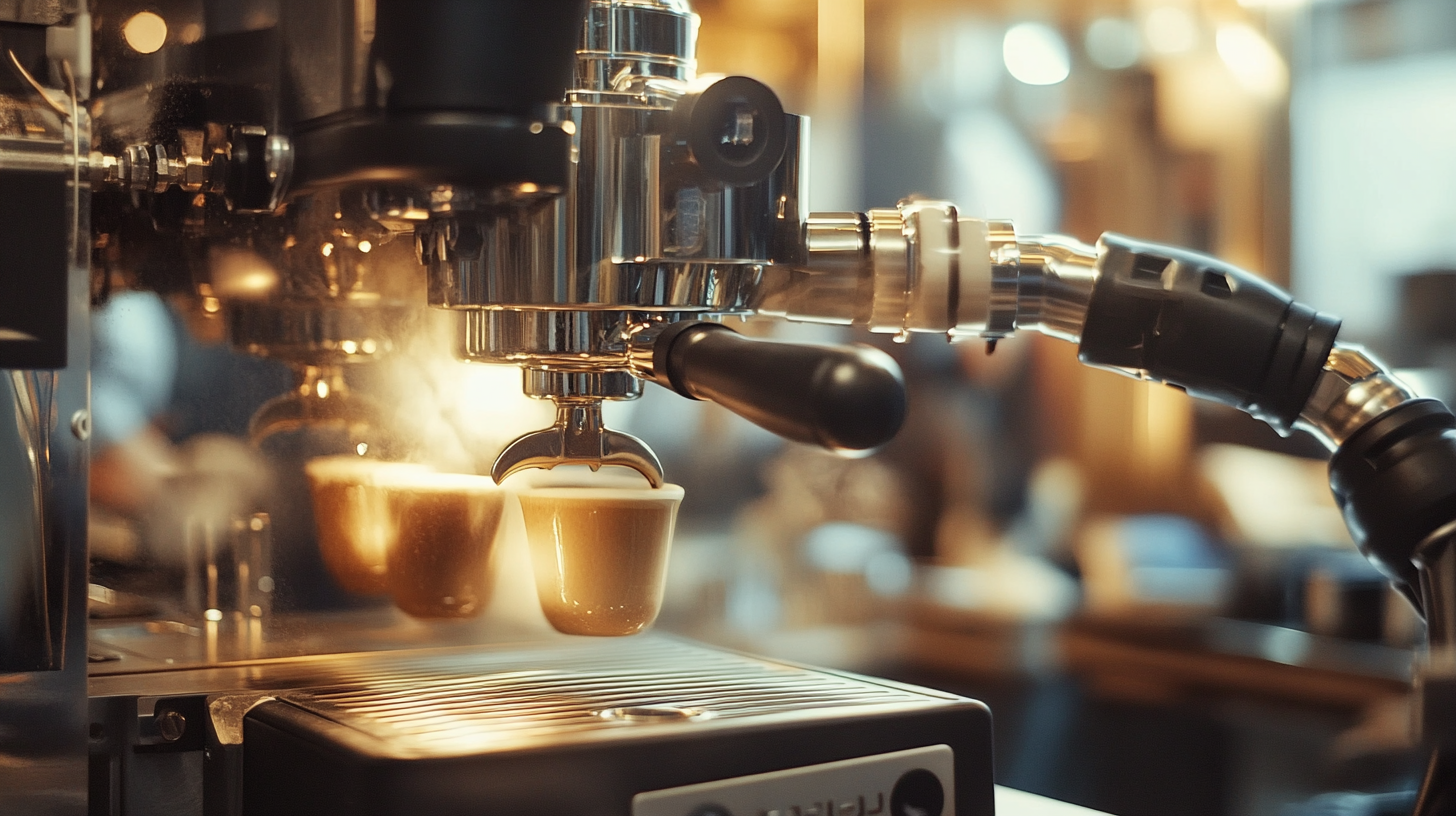Exploring Innovative Applications of Coffee Robot Arm Technology for Global Buyers
It is nothing but the latest developments in automation in which the entire world has changed within a few decades. Coffee Robot Arm is one such modern invention which not only remodels a traditional procedure of preparing coffee, but also revolutionizes the way consumers expect their beverage to be delivered. The promise of robotic arms for coffee-making lies in offering global consumers uniqueness, efficiency, consistency, and precision with an artful touch; it's something they have always dreamed of seeking.
The Coffee Robot arm is also a fantastic example of how we can make our daily routines a bit more exciting by incorporating robotics into existing everyday activities, such as blending technology with culinary art. This article will examine some more interesting uses of this technology, which brings advantages to both businesses and hobbyists alike. From the highest-end cafes to the president of the coffee club, the versatile and effective Coffee Robot Arm systems have captured the attention of audiences from all over the world, thus paving the way for a paradigm shift in our perception of the preparation and consumption of coffee. Carry on as we explore the future of Coffee Robot Arms and what it means to the world of coffee.

Revolutionizing Coffee Brewing: The Role of Robot Arm Technology
In recent times, the weaponry has come to that phase where one would incorporate diversification technology of robot arms. These machines have really gone beyond acting as mechanical arms but have started to be kitchen artistry, melded with engineering. The robot arms will perform miracles in brewing, mimicking all the intricate techniques, although ensuring consistent quality at the same time, and revolutionizing the coffee experience both to consumers and baristas. Pour-over brewing to latte art-making, these machines will improve all facets of coffee preparation while keeping high standards. Amidst his audience in the recent World Robot Conference are spectators left agog by the versatile capabilities of humanoid robots, many integrated with highly advanced robotic arms within ones. This innovation also gives the insight of how the coffee brewing experience in the future will look, thus, presenting exciting opportunities to global buyers to include this technology in their cafes and restaurants. Joining robotic precision and the created art of preparing coffee means streamlined operations, resulting in less waiting time for the customer while delivering a product of high quality and consistency. Coffee enthusiasts from every corner of the globe can now expect the marriage of technology and coffee culture to change their lives forever.

Enhancing Barista Skills: How Robots Assist in Crafting Perfect Coffee
Innovative robotics in the coffee industry would change barista skills and the science behind brewing coffee. Allied Market's report said that by 2026, the global coffee market is expected to be at $102.15 billion, indicating the growing need for clever brewing techniques. One such innovation is coffee robot arms, which provides a barista precision, consistency, and efficiency in every cup.
These robotic assistants can help the barista in performing different functions, from the perfect grinding of beans to equally frothing up milk. According to a report from MarketsandMarkets, the coffee machinery market is expected to grow at a CAGR of 5.7% due to increasing automation in coffee preparation. It's much easier for a coffee shop to ensure strict quality standards with perfect brew on every order, all thanks to robotic arms, thereby eliminating much of the human error crisis that traditional methods cling to.
This technology is not limited to automation only; it also elevates consumer experience. These robot arms can be programmed to do art on every coffee created and hence fulfill the aesthetically pleasing drinks part of a rising consumer need for Instagram-worthy coffees. Thus, robots will indeed be an inseparable partner in the barista's training process when every coffee shop adopts this technology. The future seems pretty bright, with revolutionary technology taking the coffee experience up and beyond internationally.

Adapting Coffee Robots for Different Cultures and Brewing Techniques
As the coffee culture evolves worldwide, the integration of robotic technology in most coffee preparation steps is transforming some of the standard ways of brewing into more contemporary ones that adapt to various cultural likes. The success of these robotic coffee arms recently at events, including the Chongqing International Coffee Festival, has proven that these machines are more than just novelty items; in fact, they provide practical solutions to enhance operational efficiency. These robots brew coffee in less than 50 seconds and work 24/7, altering consumer experiences in multiple ways, accommodating a wide array of tastes and brewing styles.
Reports from the industry show that service robotics are gaining unprecedented traction globally, with strong recognition from B2B clients who see the machines' potentials as far past being an initial gimmick. Enabling engineering advancements have brought coffee robots just about everywhere, from being tailored to fit cultural contexts in Shanghai International Coffee Cultural Festival to where these technologies create a custom brewing experience that resonates with local consumers by bridging tradition and innovation.
The launch of next-generation coffee robots worldwide emphasizes this commitment to positioning them within enhanced user engagement through regional brewing preferences. From the memorizing of thousands of recipes and the desire of individual consumers, the robots also ensure the preservation of traditional methods in brewing while adding a smile to those making the work much more efficient. As the robot coffee business grows further, it needs to remain paramount for manufacturers to modify their machines according to unique cultural characteristics of coffee drinking around the world in order to create harmony between technology and tradition.

Future Trends: The Evolution of Coffee Robots in Global Markets
The coffee world is about to witness technological innovations with the coffee robots becoming a regular feature in cafes and restaurants across the globe. As reported by Allied Market Research, the global coffee robotics market will amount to $2.5 billion by 2027, with a CAGR of 19.6% from 2020 to 2027. The major driving forces for this growth include the high costs of labor and the mandatoriness of brewing quality consistency in beverages. Coffee robots use accurate automated processes to ensure that every cup is made to the highest standards, increasingly becoming more popular with the selective tastes of consumers.
In the future, trends in coffee robots will shift beyond mere automation, designing interfaces directly popular in customer experience. Integration with the customer will take a personal order and offer personalized recommendations based on that order. MarketWatch research states that, by 2025, AI applications in coffee-making technology can boost consumer engagement, which may give up to 30% sales increment in establishments that will adopt these innovations.
In addition, since sustainability is becoming an increasingly important issue in food and beverage sectors, it is with a green feature that coffee robots are being developed. The Specialty Coffee Association has shown from a study that automation could lessen waste and improve energy efficiency, both of which answer consumer needs for sustainable practices. Such a move toward greener technologies will not only help manage efficiency better but will also resonate with brand loyalty from eco-conscious consumers, which makes the change to coffee robotics beyond a trend, but really a much-needed evolution in the coffee market.
Sustainability and Efficiency: Coffee Robots in Eco-Friendly Practices
Coffee robot arm technology is expected to make revolutionary changes in the beverage world, making apps more sustainable and efficient. According to a report from MarketsandMarkets on the global coffee robot market, value projection figures for developing automated machinery for coffee preparation will rise to $1.2 billion by 2025. Such machines do not just prove effective for making the coffee process easier but also conserve the use of waste, and improve efficiency in the utilization of resources during the activity.
Compared to conventional brewing, coffee robots need energy-efficient and relatively less energy using; using precise algorithms and advanced significant sensors could help meet this objective. Studies conducted by the Specialty Coffee Association show that the automated systems could consumed water about 30% less than manual ones, which can become more significant as regions increasingly feel pressure concerning water scarcity. Such optimal brewing parameters would yield high-quality coffee brews, and the minimized over-extraction of coffee grounds would, therefore, lead to lower environmental impact.
In addition to conservation, coffee robots can also perform efficiency roles in cafes and restaurants. The ability of these machines to maintain high-quality standards while enhancing both efficiency and the time of serving allows businesses to serve an increasing target population of eco-conscious customers. In a National Coffee Association report published in 2022, 62% of coffee drinkers reported preferring a brand when it maintains a sustainable practice. More coffee shops adopting coffee robots send a strong signal toward sustainability because this integration can boost brand loyalty and increase customer engagement.
